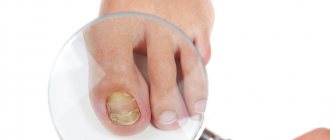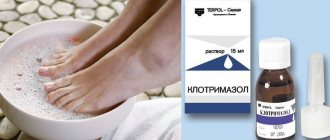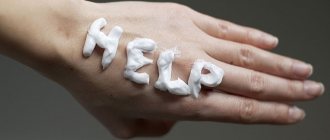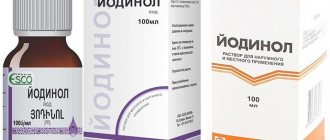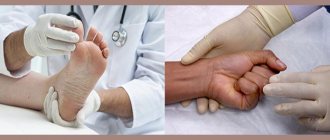Clotrimazole is a broad-spectrum antimycotic or antifungal agent. The antimycotic properties of clotrimazole were discovered in the late 1960s. The drug belongs to the category of imidazole azole antifungals. It is available in a variety of dosage forms, including creams, ointments, tablets, and slow-dissolving capsules.
Clotrimazole may be used to treat anemia
In addition to its antifungal activity, clotrimazole has become a drug of interest for the treatment of a number of other diseases, such as sickle cell disease, malaria and some types of cancer. This drug's minimal side effects and uncomplicated metabolic profile have led to its widespread use for the treatment of fungal outbreaks, such as vaginal infections caused by yeast spores (candida vulvitis or thrush), as well as athlete's foot.
Use of the drug
Clotrimazole cream is prescribed for the topical treatment of the following skin infections:
- Tinea pedis, tinea cruris and tinea corporis caused by Trichophyton rubrum, Trichophyton mentagrophytes, Floccosum Epidermophyton;
- Candidiasis caused by Candida albicans;
- Herpes zoster caused by Malassezia furfur;
- Diaper rash infected with Candida Albicans;
In some drugs, clotrimazole can be combined with betamethasone dipropionate and corticosteroids.
The oral formulation is indicated as a prophylactic drug to reduce the incidence of oral and pharyngeal candidiasis in immunocompromised patients receiving chemotherapy, radiation therapy, or steroid therapy used to treat leukemia, cancer, or kidney transplantation. The drug is not indicated for the treatment of any systemic mycoses.
Clotrimazole analogs
Level 4 ATC code matches:
Daktarin
Oronazole
Isoconazole
Kandibene
Miconazole
Candide B
Nizoral
Kanesten
Mifungar
Ecodax
Econazole
Travogen
Bifonazole
Sebozol
Mycozolon
Mycozoral
Travocort
Mycospor
Mycospor Set
Dermazol
Synonyms of dosage forms for external use:
- Amyclone
- Imidil
- Kandibene
- Kandizol
- Candide
- Kanesten
- Kanizon
- Funginal
- Funugitsip
Analogues in the form of vaginal tablets:
- Candide
- Imidil
- Kandizol
- Kandibene
- Funginal
- Candid-B6
- Kanizon
- fungicip
Which is better: Candide or Clotrimazole?
Candida is synonymous with Clotrimazole. The basis of both drugs is the same substance, so there are no fundamental differences between them.
Clotrimazole or Pimafucin - which is better?
The main component of Pimafucin is the antimycotic antibiotic nitamicin . Sensitivity to the drug is predominantly caused by molds and yeasts (including the genera Penicillium, Candida, Cephalosporium, Aspergillus and Fusarium).
Pseudoallescheria boydii and dermatophytes are less sensitive to Pimafucin. That is, in situations where the cause of the disease is fungi of the genus Epidermophyton, Trichophyton or Microsporum, the choice should be made in favor of the drug Clotrimazole.
The use of Clotrimazole is less often accompanied by hypersensitivity reactions. In addition, it is less likely than Pimafucin to provoke imbalances in the microflora of the genital organs.
pharmachologic effect
Clotrimazole is a broad-spectrum antifungal agent that inhibits the growth of pathogenic yeasts by altering the permeability of cell membranes. The action of clotrimazole is fungistatic at concentrations of the drug up to 20 μg/ml and can be fungicidal in vitro against Candida albicans and other species of the genus Candida at higher concentrations. Unfortunately, resistance to clotrimazole, which was rare in the past, is now common among various patient groups.
The drug Clotrimazole fights fungus well
Clotrimazole is generally considered a fungistatic rather than a fungicidal drug, although this difference is not absolute as clotrimazole exhibits fungicidal properties at higher concentrations.
The action of the drug is based primarily on damage to the permeability barrier in the cell membrane of fungi. Clotrimazole inhibits the biosynthesis of ergosterol, an essential component of fungal cell membranes. If ergosterol synthesis is either completely or partially inhibited, the cell is no longer able to create an intact and functional cell membrane. Since ergosterol directly stimulates the growth of fungal cells in a hormone-like manner, the rapid onset of the above processes results in dose-dependent inhibition of fungal growth.
Although there is a decrease in ergosterol, due to the inhibition of lanosterol 14-demethylase (also known as CYP51), which is believed to be responsible for the antifungal properties of clotrimazole, this drug also exhibits other pharmacological effects. These include inhibition of sarcoplasmic reticulum Ca2+ -ATPase, intracellular calcium depletion, and blockade of calcium-gated potassium channels and voltage-gated calcium channels. The action of clotrimazole on these complexes explains other effects of this drug that differ from its antifungal activity.
Composition and effect of the drug
Clotrimazole ointment for acne consists of an active substance and auxiliary components. The main active ingredient is clotrimazole. Additional substances in the composition are elements such as:
- methylparaben or nipagin;
- polyethylene oxide;
- propylene glycol;
- polyethylene oxide
The product actively resists acne and age spots that appear as a result of boils. The ointment has a beneficial effect on the affected skin and helps eliminate defects caused by gram-negative or gram-positive bacteria. The medication also helps prevent infection by molds, dermatophytes and candida. A course of treatment with the drug helps improve complexion. The ointment helps get rid of inflammatory processes on the skin.
Overdose
Symptoms of overdose include erythema, tingling, blistering, peeling, swelling, itching, urticaria, burning and general skin irritation, and cramps. As with all topical medications, skin sensitization may occur.
Clotrimazole does not pose a risk of acute toxicity as it is unlikely to occur after a single vaginal or cutaneous application. Overdose when applied is possible over a large area under conditions favorable for absorption, or accidental oral administration. There is no specific antidote.
Release form
- gel 1% (pack of 20 and 40 g);
- cream 1% (tubes 15, 20, 30 and 50 g);
- ointment 1% (tubes 15, 20, 30 and 40 g);
- 1% solution (15 ml bottles);
- vaginal suppositories 0.1 g (package No. 6);
- vaginal tablets 0.1, 0.2 or 0.5 g (packaging No. 1, No. 3, No. 6; tablets are equipped with an applicator).
Clotrimazole can also be produced in the form of granules, powder for external use, or spray.
The drug is intended for local (including intravaginal) and external use; tablets for oral administration are not available.
Peculiarities
Clotrimazole should not be used during the first trimester of pregnancy unless the doctor considers its use necessary for the patient's health. The drug should not be used during menstrual periods in the treatment of candidiasis vulvitis (thrush). If breastfeeding, clotrimazole can be used only as prescribed by your doctor.
The drug weakens the effect of nystatin, natamycin, amphotericin B when used simultaneously. The cream is not used to treat nails or fungal diseases of the head.
For external use, Clotrimazole cream is rubbed into the affected areas of the skin. Do not apply the product to the area around the eyes.
Clotrimazole is not prescribed to infants and premature infants
To treat candidiasis vulvitis, the capsule is inserted into the vulva, and the perineal area and mucous tissues are treated with cream. During treatment of candidal vulvitis, unprotected sex should be avoided so as not to infect the partner. If infection does occur, treatment should also be carried out by the partner. When carrying out therapy with the drug, tampons, spermicides and other vaginal products should not be used.
Hormonal ointments
When there is no positive dynamics from the use of non-hormonal ointments, specialists resort to hormonal drugs. Their main components are glucocorticosteroids - hormones that are produced by the adrenal glands in the human body. The mechanism of action of such drugs is based on the effect on the metabolism of proteins and carbohydrates. Hormonal ointments restore the level of cortisone, with a deficiency of which the body becomes unable to cope with inflammatory processes.
Depending on the degree of impact on the skin, hormonal ointments are divided into several categories:
- weak,
- average,
- strong,
- very strong.
The latter are used only for the most severe forms of dermatitis, so they are never prescribed first. Examples of hormonal ointments:
- Hydrocortisone,
- Celestoderm,
- Akriderm,
- Advantan,
- Elokom,
- Dermovate,
- Fucicort.
The main disadvantages of hormonal ointments in the treatment of dermatitis:
- Addiction. The main disadvantage is that over time the ointment ceases to be effective for treating a particular patient. The same active components of hormonal ointments are addictive.
- Side effects. Due to their hormonal nature, such ointments have many unpleasant side effects. They appear when used incorrectly or for too long. In severe cases, skin atrophy and even adrenal insufficiency may develop.
- Presence of withdrawal syndrome. As in the case of non-hormonal ointments, when using hormonal ointments, you cannot interrupt the course and skip application. The withdrawal syndrome manifests itself especially strongly when abruptly stopping a hormonal drug. This means that symptoms of dermatitis may suddenly return. For this reason, hormonal drugs are discontinued gradually, reducing the dose and number of applications.
Hormonal products can claim to be the best ointments for dermatitis, but only in terms of effectiveness. Yes, they help cope with the symptoms of the disease faster than non-hormonal ones. But at the same time, they can have a short-term effect, require very strict adherence to the treatment regimen, have side effects and a large list of contraindications, which includes:
- venereal diseases;
- tuberculosis;
- pregnancy and lactation;
- herpes;
- bacterial or fungal skin lesions.
Application and dosage
Clotrimazole in cream form is available in 20 gram tubes. 1 gram of the drug contains 20 mg of active substance.
The drug is rubbed into the affected areas of the skin in a thin layer 2-3 times a day.
The duration of the course of therapy is:
- dermatomycosis - 3-4 weeks;
- erythrasma - 2-4 weeks;
- lichen versicolor - 1-3 weeks;
- candidal vulvitis and candidal balanitis - 1-2 weeks.
To consolidate the positive results of treatment and prevent re-development of the disease, the course can be continued for 2 weeks after the symptoms of the disease disappear.
If the patient's condition does not improve after 4 weeks of using the drug, you should consult a doctor.
If you have hypersensitivity to the drug, allergic reactions, headaches, or other side effects, you should consult a doctor. When prescribing a course of treatment, the patient must report a history of sexually transmitted diseases, allergic reactions, if the patient’s temperature is above 38C.
How to choose drugs for fungus
To combat mild fungal infections, topical preparations—varnishes, ointments, sprays, shampoos, and special solutions—are sufficient. For advanced diseases, both local and systemic agents are used. Anti-fungal tablets serve as a supplement, ridding the subungual skin and other tissues of the pathogen. In the “Antifungal Drugs” section on our website you will find the medications listed in this article, as well as their analogues.
Any drugs for fungus should be selected with the help of a specialist who can determine the severity of the disease and take into account the individual characteristics of the body.
The offer is not an offer, the drugs presented are medicines, specialist consultation is required.
Clotrimazole price
The price of Clotrimazole in vaginal tablets in Russia is from 50 rubles per package of 100 mg 6 pcs. In Ukraine, the price of vaginal tablets starts from 30 hryvnia.
The price of Clotrimazole ointment 20 g in Russia is from 100 rubles; in Ukraine you can buy ointment for a price of 30 hryvnia.
The average price of a solution for external use in Russia is from 300 rubles.
- Online pharmacies in RussiaRussia
- Online pharmacies in UkraineUkraine
- Online pharmacies in KazakhstanKazakhstan
ZdravCity
- Clotrimazole-Akrikhin solution for external use.
approx. 1% fl. 15mlMedana Pharma A.O. RUB 331 order - Clotrimazole cream 1% 20gGlaxoSmithKline Pharmaceuticals SA
RUB 262 order
- Clotrimazole cream 1% 20gHyperion SA
115 rub. order
- Clotrimazole lotion for nails. and skin micospray fl. 15 mlCorvette Pharma LLC
130 rub. order
- Clotrimazole cream d/nar.prim. 1% tube 20g No. 1Ozon LLC
RUB 139 order
Pharmacy Dialogue
- Clotrimazole-Akrikhin (vial 1% 15ml) Akrikhin OJSC
330 rub. order
- Clotrimazole (vial 1% 15ml)Medana
RUB 327 order
- Clotrimazole-Akrikhin ointment (tube 1% 20g) Akrikhin OJSC
RUB 137 order
- Clotrimazole ointment (tube 1% 15g) Muromsky PZ
63 RUR order
- Clotrimazole ointment (tube 1% 20g) Sintez (Kurgan) OJSC
126 rub. order
show more
Pharmacy24
- Clotrimazole 25 g ointment PAT NEC "Borshchagivsky chemical-pharmaceutical plant", Kiev, Ukraine
15 UAH. order - Clotrimazole 100 g No. 6 vaginal tablets Evertogen Life Sciences Limited, India/Optimus Generics Limited, India
31 UAH order
- Clotrimazole Fitofarm 15 g ointment PRAT "Fitofarm", Ukraine
9 UAH order
- Clotrimazole 1% 20 g ointment Encube Ethicals Private Limited, India
34 UAH order
- Clotrimazole Teva 200 mg No. 3 vaginal tablets Merkle GmbH, Nimechchina
60 UAH.order
PaniPharmacy
- CLOTRIMAZOLE ointment Clotrimazole ointment 1% tube 20g India, Encube Ethicals
43 UAH order
- CLOTRIMAZOLE ointment Clotrimazole ointment 15g Ukraine, Fitofarm ChAO
12 UAH order
- CLOTRIMAZOLE tablets Clotrimazole tablets. vag. 100 mg No. 6 India, Optimus Generics Ltd
31 UAH order
- CLOTRIMAZOLE tablets Clotrimazole tablets. vag. 100 mg No. 6 Poland, GlaxoSmithKline Pharmaceuticals
41 UAH order
- CLOTRIMAZOLE liquid Clotrimazole solution 1% 25ml Ukraine, Borshchagovsky Chemical Plant PJSC
20 UAH order
show more
Reviews of Clotrimazole
Solution, ointment, cream, gel, suppositories and vaginal tablets Clotrimazole - reviews are eloquent confirmation of this - this is a time-tested, inexpensive and very effective remedy for nail and skin , as well as for urogenital mycoses .
In addition, the drug is effective against age spots .
Reviews of Clotrimazole suppositories on forums are mostly as follows:
- “... It’s the only thing I use to treat thrush. The product is cheap, but it helps a lot. No side effects."
Important features of Clotrimazole, which are taken into account when prescribing it, are the possibility of:
- the use of suppositories, tablets, ointments, solutions, gels and creams for thrush during pregnancy;
- prescribing creams and ointments for the preventive treatment of a woman’s sexual partner.
No less good reviews from men about Clotrimazole ointment and reviews about the cream. The only drawback of the drug, men sometimes note, is that it should be used for a long time.


